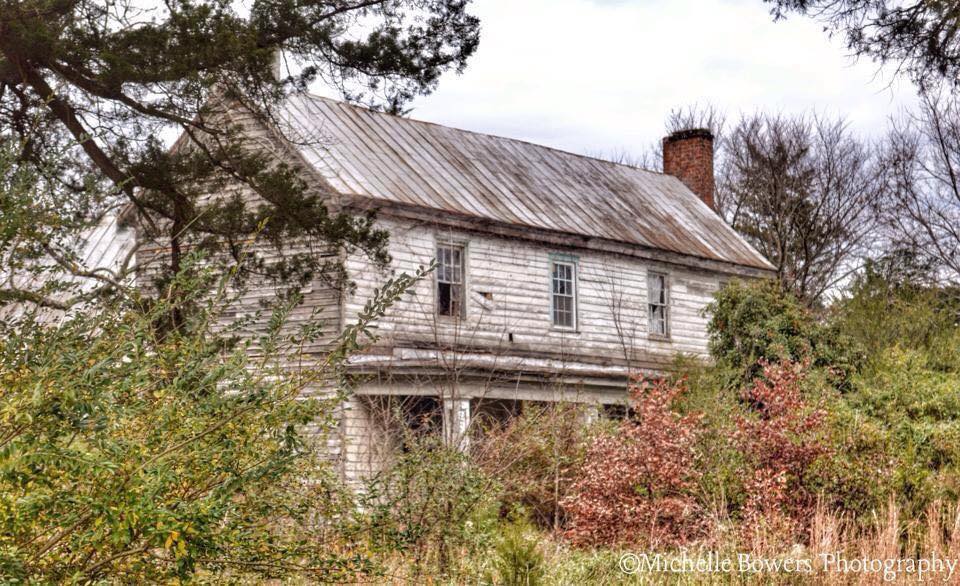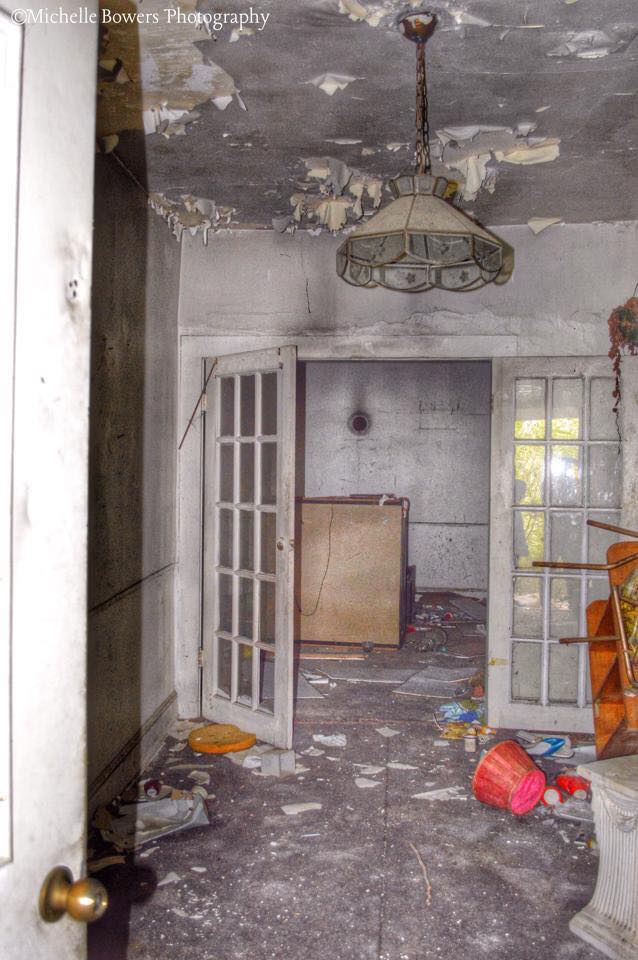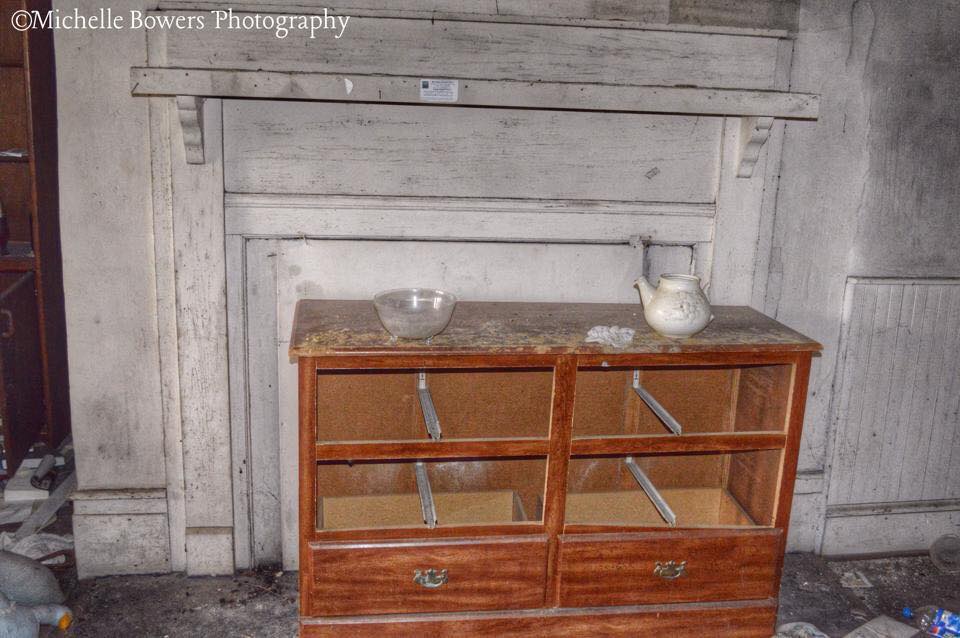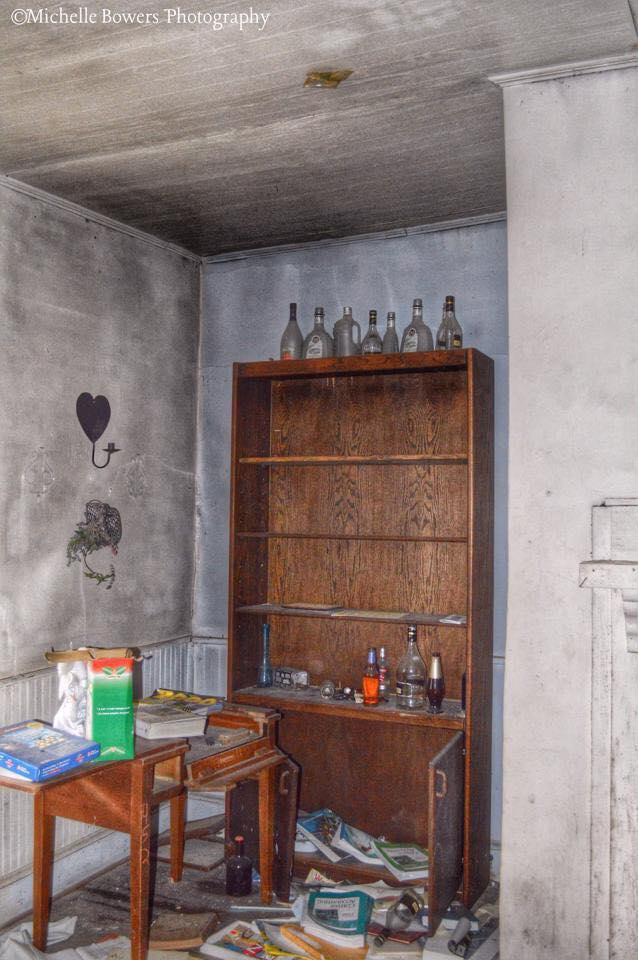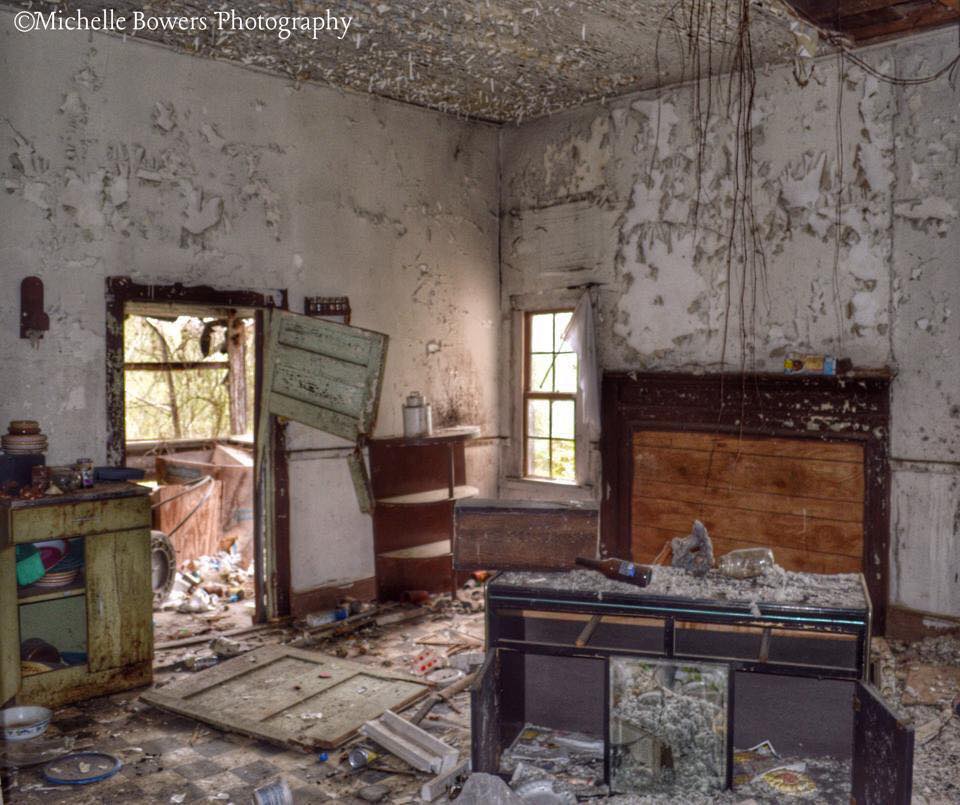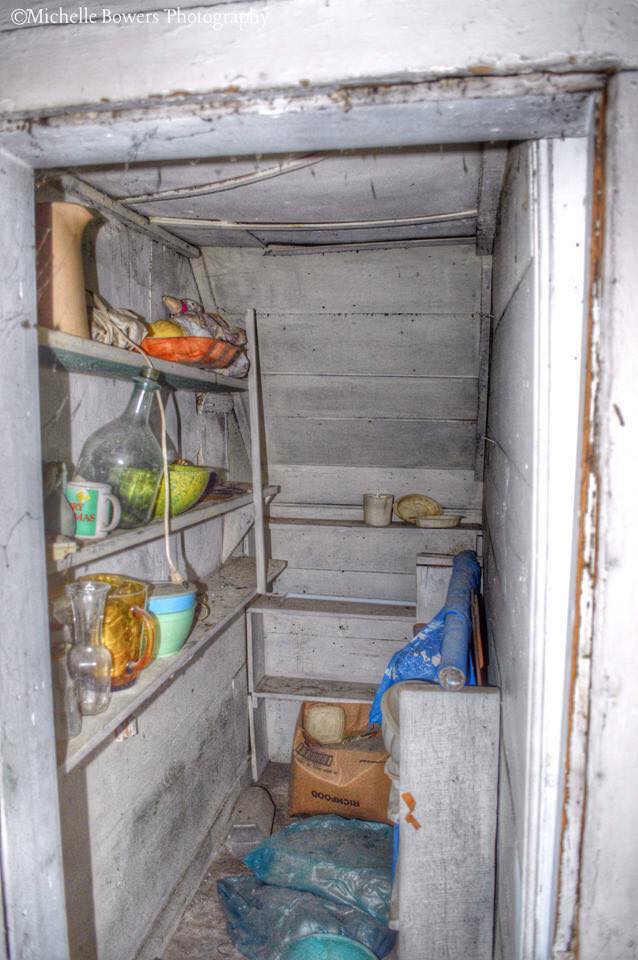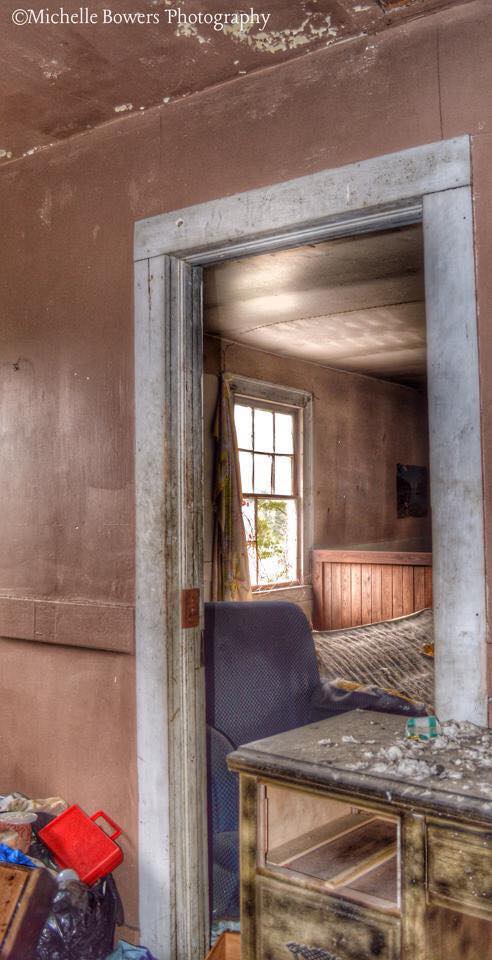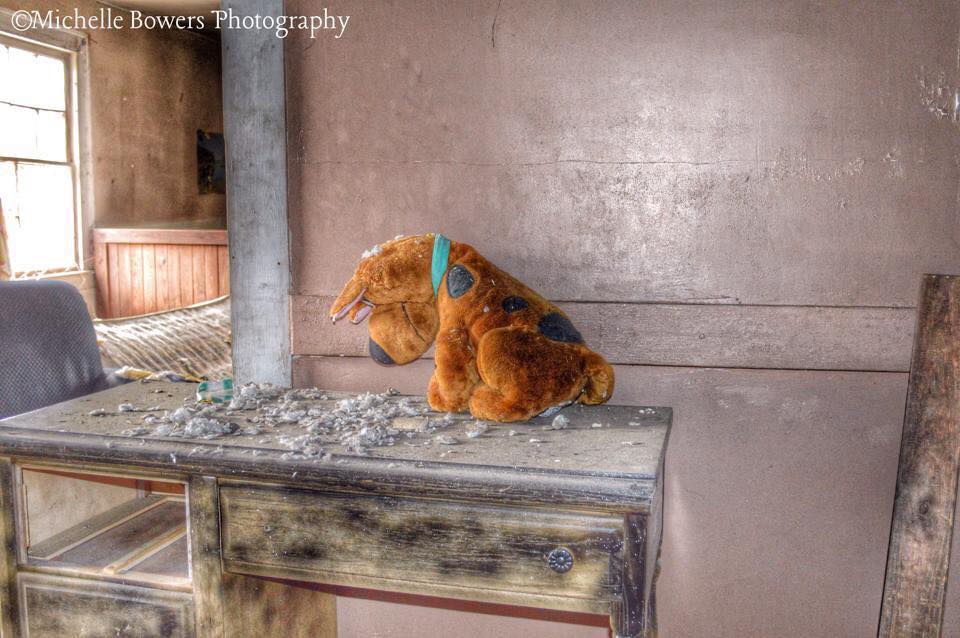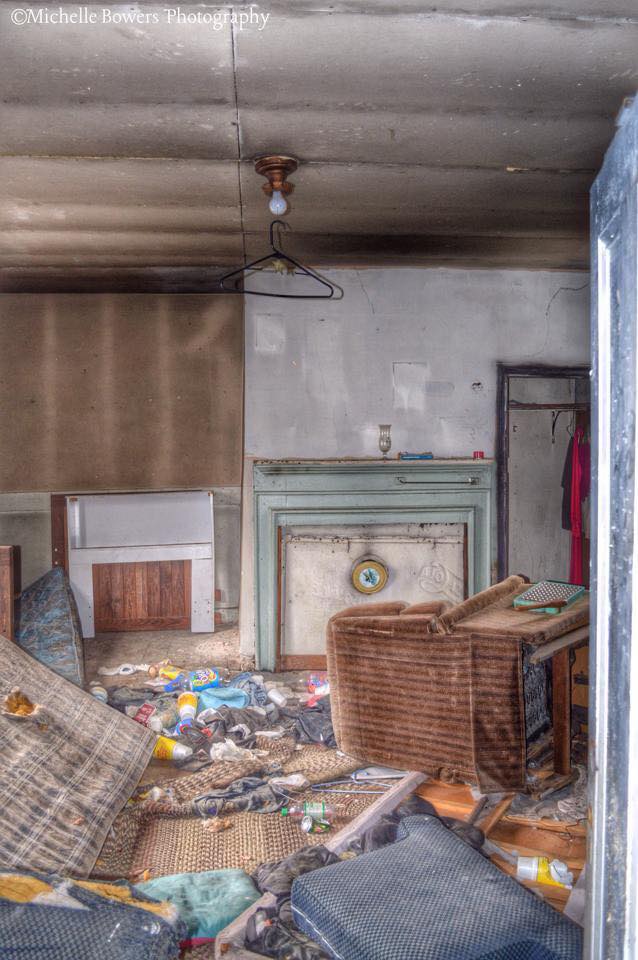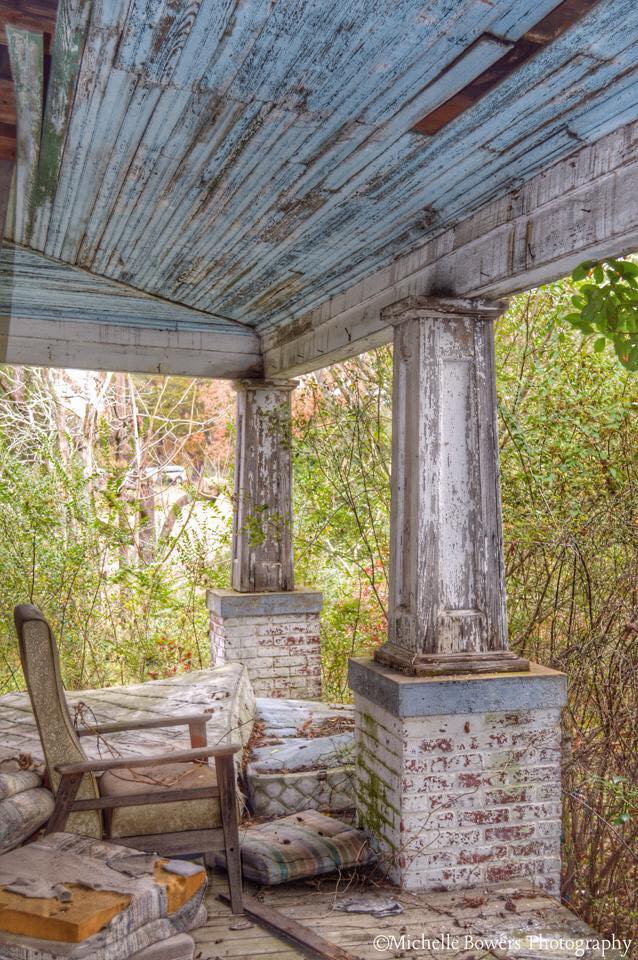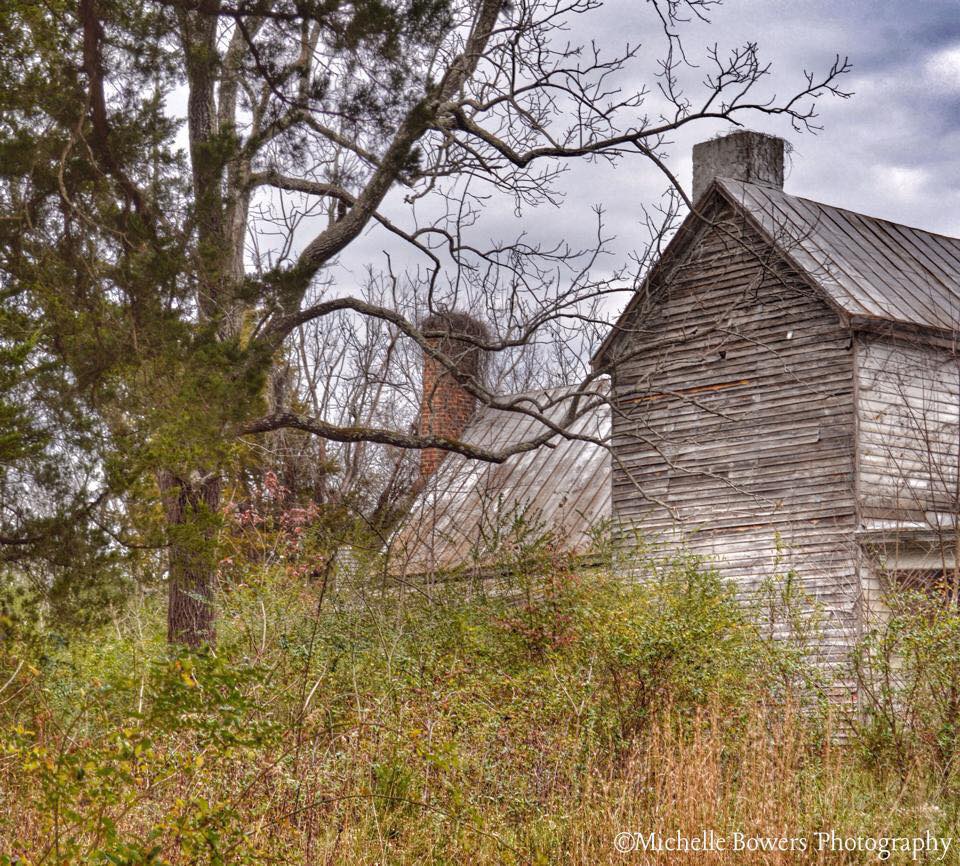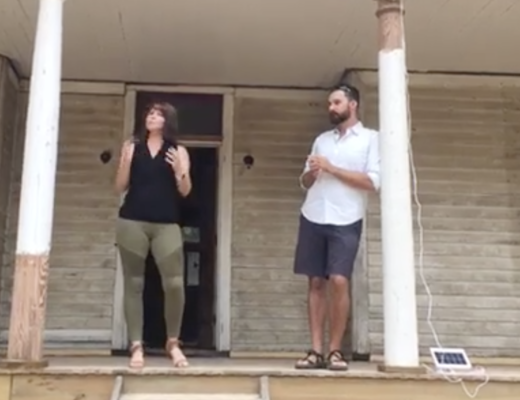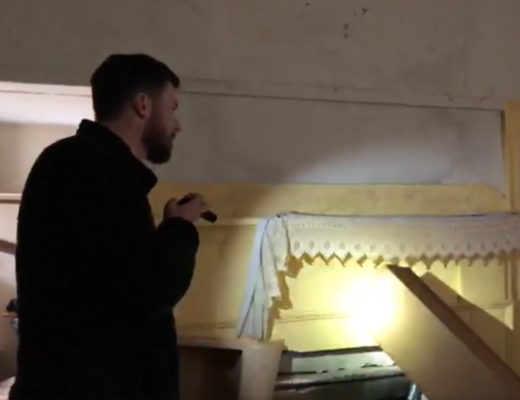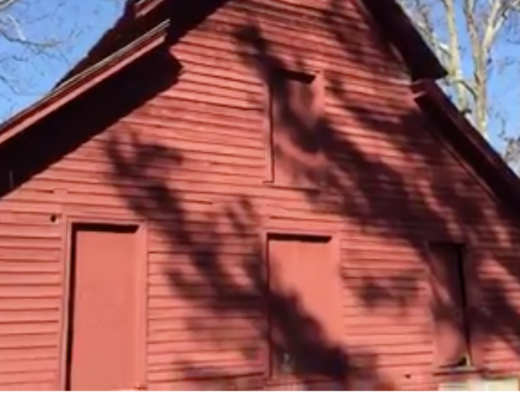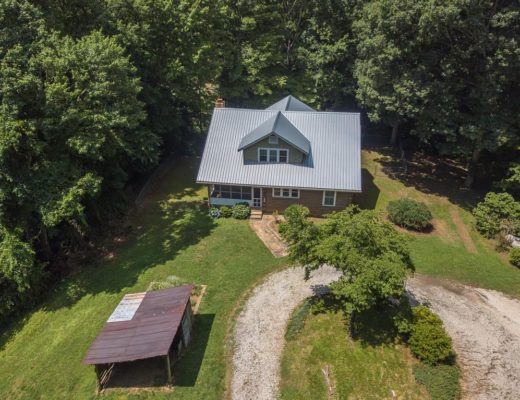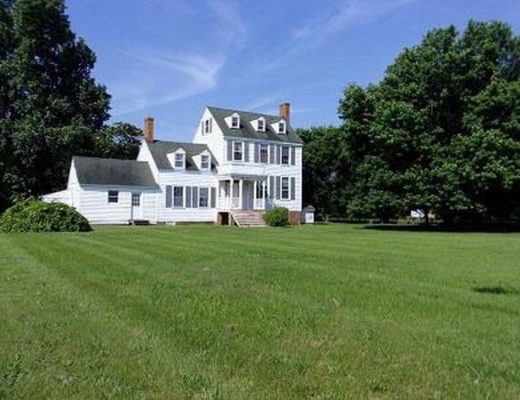Lombardy Grove Tavern, located in Southern Virginia, is a seemingly dilapidated house from the road. Many have probably driven past it without thinking much about it, but if they only knew its history. I was driving to the ghost town of Union Level several years ago when we drove past this house. We immediately made a U-turn in the road to get back to it. (-see picture gallery at bottom for my interior pictures)
While it is in rough shape, for me its large stature stood out. I knew immediately it had to have been a significant structure at some point. It had large, imposing trees around it. Another thing that stood out to me, was it’s location. It was on a corner of two roads that were significant back in the day.
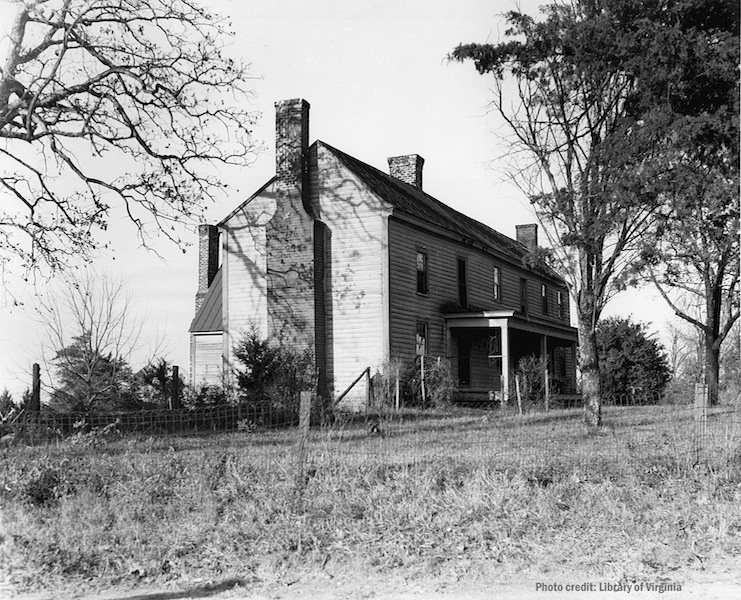
We pulled over and got out to look around. Almost immediately a pick up truck pulled in behind me and blocked me in. It was a local, Jasper White. He wanted to make sure I heard the “stories you don’t read online”. I am so glad he stopped. He is the one that told me about Myrta Lockett Avary and her connection to Margaret Mitchell. Yes, THE Margaret Mitchell, author of ‘Gone With the Wind’.
Lombardy Grove Tavern was originally a large plantation. In fact on the 1818 maps there is a town called, Lombardy Grove. It was originally built in probably very early 1800’s, maybe even late 18th century. It was owned by William Baskerville Sr, clerk of court for Mecklenburg County, Virginia. His plantation included a tannery, a blacksmith shop, a log store that also housed the post office established in 1807, and an ordinary. For those that don’t know, an ordinary was basically a tavern. They provided overnight stays and food/drinks for people traveling through. I also believe Lombardy Grove Tavern was a stagecoach stop. One thing different about this tavern is it was also a central part of the community. They held public gatherings and elections at the tavern. During the Civil War it was also a soldier enlistment location.
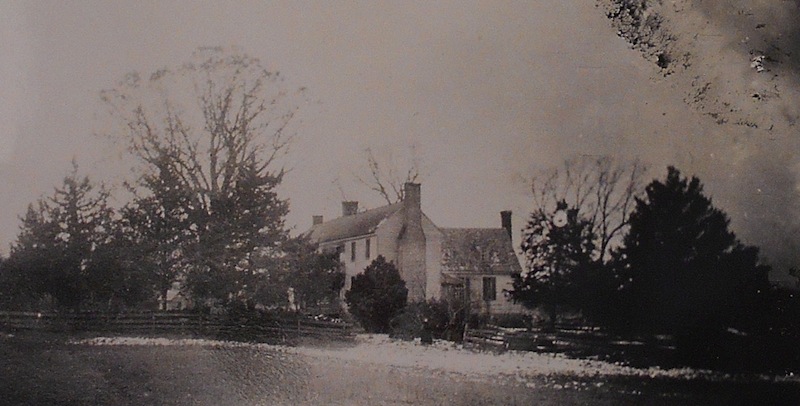
That takes me to the first thing Jasper told me. He pointed to a tree and said the soldiers would sleep back there. He also said General Sherman slept inside the tavern on one occasion while his troops slept under the “big cedar tree”. Another interesting fact I read, it was also a salt dispensary. Before refrigeration salt was used to preserve food. The confederate government allowed 20 pounds per household.
Jasper’s eyes then got really large, “guess who else stayed at the tavern? Margaret Mitchell! She met Miss Myrta and knew immediately that Scarlet in Gone With the Wind would be fashioned after her!”
While I would love to believe Jasper’s tale about Myrta, my research shows that Margaret didn’t visit Lombardy Grove, but she was a fan of Myrta Lockett Avary’s own books. She was quite an accomplished author, having written books like, ‘A Virginia Girl in the Civil War’, ‘Dixie After the War’, and ‘Uncle Remus and the Wren’s Nest’. Margaret Mitchell has said she could not have written ‘Gone With the Wind’ without having read and been a fan of Myrta Lockett’s books.
Who was Myrta Lockett Avary? In 1863, Harwood Lockett became the tavern operator. He later purchased it in 1869. He was Myrta’s father. I have read some accounts that Myrta was considered the most beautiful woman in southern Virginia. When I read that, it gave me a bit of hope that just maybe Margaret Michell did meet her in person!
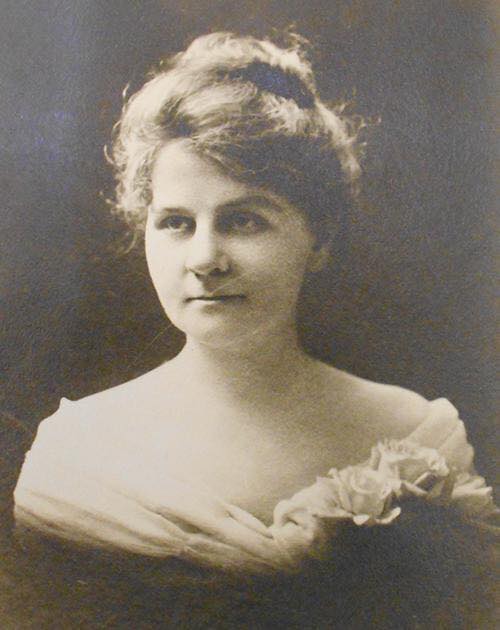
After the war, Myrta wrote memoirs for her nephew. In them she described life after the war in Mecklenburg County, Virginia. I found this from the Southern Virginia Homefront:
In her account of the reception held at Lombardy Grove in 1868 to celebrate the wedding of her brother, John, and Lucy Baskerville, she described a table laden with “meats and sweets.” There was the “classic ‘Pig with Apple in his Mouth'” along with a decorated ham of “great antiquity” that had been “buried so well that Sheridan’s raiders had failed to find it. ‘Sweet as sugar’ and ‘crumbles in your mouth,’ [was] said by those nibbling wafer thin slices. Truly a lordly dish.” Despite the gaiety of the described event, she notes her parents must have wanted to do more for the eldest son: “If age and poverty had not eventually broken them. No, not so much age and poverty. But the War, war that kills sweetness and beauty.”
The Lockett family at some point also acquired the local foundry and mill. In Myrta’s memoirs she described her visits there. Taken from the Southern Virginia Homefront:
We went to it half-mile from the house, in carriages and buggies. The forms, molds, or whatever the receptacles were called in which melted metal was to take shape, were square boxes filled with sand, and laid on the earthen floor in rows with aisles between. In the sand were depressions the shape and size of the point.
In the furnace, the hottest thing I ever saw, was the metal, liquid and brought to a white heat. It was in a container that tilted. Between two long poles supported at each end by a negro man, swung a metal pot. These two men, Uncle Sam and Humphrey, swung that pot under the furnace container until it filled with that white hot liquid; then, rapidly moving along the aisles, they emptied it into the square boxes. There was roaring within, the sound of rushing waters without, and, I suppose, in close vicinity of the men, intolerable heat. Those two men, my brothers’ foremen, were drawn from my father’s select force of trained workmen. Philip and John could leave them in charge of everything when need be.
Myrta Lockett married doctor James Corbin Avary of Georgia in 1884. Shortly after she moved to Georgia with him. She was a writer for the Atlanta Journal, Atlanta Constitution, and Atlanta Georgian. Whenever I stumble onto a house like this one, I always wonder who lived there. Myrta Lockett Avary was a very pleasant surprise. Let’s end this with her words about life on Lombardy Grove:
In that bright time of promise, Southern cotton and tobacco were selling. Northerners were coming down to buy Southern lands. Groups of prominent business men–promoters, surveyors, engineers, stopped at Lombardy Grove which because of location and other factors was a center for public movements. General Imboden, later the husband of your Aunt Annie, was a member of some such group. Lecturers, who spoke at Zion Church about “Texas” and other themes of the day, spent nights with us.
The foundry furnished one of the show places of the section. It was on papa’s land and the water power was supplied by Dockery Creek, a deep quiet stream which circled about through the plantation and turned the wheel of a grist mill… . The foundry, the mill, the tannery, the cotton gin, the blacksmith’s shop, each supplied the nucleus of a little settlement. In modern terms, Lombardy Grove might be described as a community center. The post office was at Papa’s store; and on two days each week, many horse [sic] and mules would be tied to the hitching posts thereabouts.
To read more about Lombardy Grove and other notable places in Southern Virginia, please visit the Southern Virginia Homefront website. In closing, Myrta Lockett Avary died in Atlanta on February 14, 1946. She is buried at Oakland Cemetery in Atlanta. She and her husband divorced in 1911. I don’t believe she remarried or had any children.

